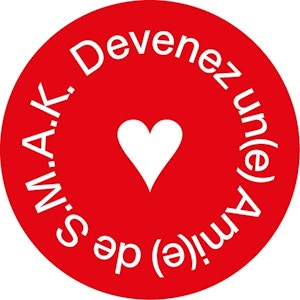Poging 8 tot het verbeelden van Jan Hoet
Marlene Dumas
1992
inkt, potlood en waterverf op papier
h. 20.5 cm x b. 13.5 cm
2016 schenking
inkt, potlood en waterverf op papier
h. 20.5 cm x b. 13.5 cm
2016 schenking
NL - Dit zijn een reeks pogingen van Marlene Dumas om Jan Hoet, oprichter en voormalig artistiek directeur van S.M.A.K., te portretteren. Ze maakte dit werk in 1992 ter gelegenheid van Documenta IX, een van de belangrijkste tentoonstellingen die door Hoet werd gecureerd. Dumas’ portret verkent de weergave van identiteit in al haar complexiteit, tussen het goddelijke en het goddeloze. De close-up van Jan Hoet heeft een abstract karakter en lijkt geïsoleerd van elke context. Het personage heeft een zowel confronterend en intimiderend als intiem karakter en wekt gevoelens van empathie op. Dit ‘ver-Dumas-ste’ portret ademt de bijna wezenlijke eenzaamheid en vervreemding uit van ons bestaan. Verwijzend naar de traditie van het doodsportret, alludeert Dumas met dit werk op de vergankelijkheid van het leven.
ENG - These are a series of attempts by Marlene Dumas to portray Jan Hoet, the founder and former artistic director of S.M.A.K. She made this work in 1992, on the occasion of Documenta IX, one of the most important exhibitions curated by Hoet. Dumas’ portrait explores the representation of identity in all its complexity, hovering somewhere between the divine and the ungodly. Jan Hoet’s close-up has an abstract feel and seems isolated from any context. The subject has a confrontational and intimidating character, yet one that also feels intimate and arouses feelings of empathy. This portrait, which has been given the ‘Dumas’ treatment, so to speak, exudes the almost essential loneliness and alienation of our existence. Referring to the tradition of deathbed portraiture, Dumas is alluding in this work to the transience of life.
FR - Ceci est une série de tentatives de Marlene Dumas de tracer le portrait de Jan Hoet, fondateur et ancien directeur artistique du S.M.A.K. Elle réalisa cette oeuvre en 1992, à l’occasion de Documenta IX, une des expositions les plus importantes dont Hoet a été le commissaire. Le portrait de Dumas explore le reflet de l’identité dans toute sa complexité, entre le divin et l’impie. Le close-up de Jan Hoet revêt un caractère abstrait et semble isolé de tout contexte. Le personnage a un caractère aussi bien confrontant et intimidant qu’intime et il suscite des sentiments d’empathie. Ce portrait ‘à la Dumas’ respire la solitude et l’aliénation presque susbtantielle de notre existence. Faisant référence à la tradition du portrait de la mort, Dumas fait allusion, avec cette oeuvre, à la fugacité de la vie.
Collectionnumber : 6214






















